Invertebrates
Invertebrates are animals that do not have a backbone or spinal column. They make up about 97% of all animal species on Earth and come in a wide variety of shapes, sizes, and habitats. Invertebrates play crucial roles in ecosystems and are essential for maintaining the balance of nature.
Types of Invertebrates
There are several major groups of invertebrates:
- Arthropods: This group includes insects, spiders, crustaceans, and other organisms with segmented bodies, exoskeletons, and jointed legs.
- Mollusks: Mollusks have soft bodies and may have shells, such as snails, clams, and squids.
- Annelids: Annelids are segmented worms, including earthworms and leeches.
- Echinoderms: Starfish, sea urchins, and sea cucumbers belong to this group, which has spiny skin and a radial symmetry.
- Cnidarians: Jellyfish, sea anemones, and corals are examples of cnidarians, which have stinging cells and radial symmetry.
- Poriferans: Also known as sponges, these simple animals have porous bodies and are filter feeders.
Characteristics of Invertebrates
Invertebrates share some common characteristics:
- No Backbone: Unlike vertebrates, invertebrates lack a vertebral column and spinal cord.
- Diverse Body Plans: They exhibit a wide range of body shapes and structures, adapted to their specific environments and lifestyles.
- Exoskeletons or Shells: Many invertebrates have protective outer coverings, such as exoskeletons in arthropods and shells in mollusks.
- Varied Reproduction: They reproduce through diverse methods, including sexual and asexual reproduction.
Importance of Invertebrates
Invertebrates play vital roles in ecosystems:
- Food Source: Many animals, including birds, mammals, and other invertebrates, rely on them as a primary food source.
- Pollination: Insects such as bees and butterflies are crucial for pollinating plants and ensuring their reproduction.
- Decomposition: Invertebrates like earthworms and insects help break down organic matter, contributing to nutrient cycling in ecosystems.
- Ecological Balance: They contribute to the balance of ecosystems by serving as prey, predators, and symbiotic partners with other organisms.
Study Guide
To study invertebrates effectively, consider the following tips:
- Learn to identify major groups of invertebrates based on their key characteristics and habitats.
- Understand the ecological roles of invertebrates and their importance in maintaining healthy ecosystems.
- Explore the different reproductive strategies and life cycles of invertebrates.
- Observe invertebrates in their natural habitats, such as gardens, forests, or aquatic environments, to gain a deeper understanding of their behaviors and adaptations.
- Use diagrams and illustrations to visualize the diverse body plans and structures of invertebrates.
By understanding the significance of invertebrates and their incredible diversity, you can gain a greater appreciation for the natural world and the intricate web of life on our planet.
[Invertebrates] Related Worksheets and Study Guides:
.◂Science Worksheets and Study Guides First Grade. Earth's resources
Study Guide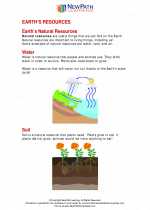 Earth's resources
Earth's resources  Worksheet/Answer key
Worksheet/Answer key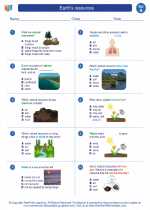 Earth's resources
Earth's resources  Worksheet/Answer key
Worksheet/Answer key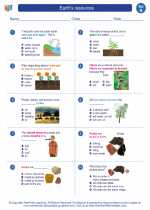 Earth's resources
Earth's resources  Worksheet/Answer key
Worksheet/Answer key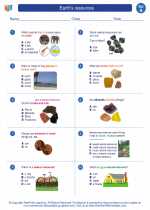 Earth's resources
Earth's resources  Vocabulary/Answer key
Vocabulary/Answer key Earth's resources
Earth's resources  Vocabulary/Answer key
Vocabulary/Answer key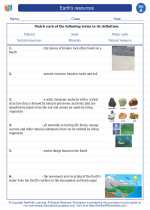 Earth's resources
Earth's resources 

 Worksheet/Answer key
Worksheet/Answer key
 Worksheet/Answer key
Worksheet/Answer key
 Worksheet/Answer key
Worksheet/Answer key
 Vocabulary/Answer key
Vocabulary/Answer key
 Vocabulary/Answer key
Vocabulary/Answer key

The resources above cover the following skills:
EARTH AND SPACE SCIENCE (NGSS)
Earth’s Place in the Universe
Students who demonstrate understanding can:
Use observations of the sun, moon, and stars to describe patterns that can be predicted.
Make observations at different times of year to relate the amount of daylight to the time of year.